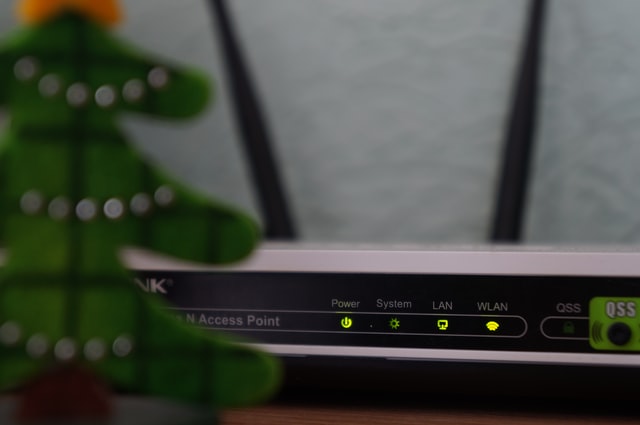What is the difference between Patent and Trademark? Intellectual property plays a crucial role in today’s innovative and competitive world, serving as the foundation for protecting and commercializing ideas, inventions, and brands. Two common forms of intellectual property rights are patents and trademarks.
While both patents and trademarks provide legal protection, they serve distinct purposes and offer different types of safeguards. Understanding the difference between patents and trademarks is essential for individuals, businesses, and inventors seeking to safeguard their creations and establish a unique identity in the marketplace.
In this article, we will explore the nuances between patents and trademarks, delving into their definitions, requirements, rights granted, and durations. By gaining a clear understanding of these differences, you will be better equipped to navigate the world of intellectual property and make informed decisions regarding the protection of your valuable assets.
Table of Contents
What is the difference between Patent and Trademark?
The main differences between patents and trademarks lie in their purpose, scope of protection, and the types of intellectual property they cover. Here are the key distinctions:
| Difference between Patent and Trademark | Patent | Trademark |
| Purpose | A patent is granted to protect inventions or new technologies, providing exclusive rights to the inventor to prevent others from making, using, selling, or importing the invention without permission. | A trademark is used to protect brands, logos, or other distinctive symbols that identify and distinguish the source of goods or services. Its purpose is to prevent consumer confusion and establish brand recognition. |
| Scope of Protection | A patent protects the underlying invention itself, granting exclusive rights to its practical applications, processes, or designs. | A trademark protects the brand or symbol associated with goods or services, ensuring that consumers can identify and differentiate them from others in the market. |
| Types of Intellectual Property | Patents cover new and useful inventions, processes, machines, or compositions of matter. They can be classified into utility patents (functional and technological innovations), design patents (ornamental or aesthetic designs), and plant patents (new plant varieties). | Trademarks cover distinctive names, logos, symbols, phrases, or designs that serve as identifiers for goods or services. |
| Duration of Protection | The duration of patent protection varies, but in most cases, utility patents last for 20 years from the date of filing, while design patents and plant patents typically have shorter durations. | Trademark protection can potentially last indefinitely, as long as the mark is actively used in commerce and renewal fees are paid at the required intervals. |
| Registration Process | To obtain a patent, inventors must file a patent application with the relevant patent office, disclosing the details of the invention and meeting specific criteria for patentability. | Trademarks can be registered by filing an application with the appropriate trademark office. The application typically includes a description of the mark and evidence of its distinctiveness. |
| Enforcement and Defense | Patent holders are responsible for monitoring and enforcing their rights. Infringement may be addressed through legal action, and patent disputes often involve complex technical analysis. | Trademark owners are responsible for protecting their marks and taking legal action against infringers. Trademark disputes focus on consumer confusion and the unauthorized use of similar marks. |
What is Patent?
A patent is a form of intellectual property protection granted by a government to an inventor or assignee, providing exclusive rights to the inventor for a limited period of time. It is a legal document that grants the inventor the right to exclude others from making, using, selling, or importing their invention without their permission.
- A patent is typically granted for a new and useful invention, process, machine, or composition of matter that is non-obvious and has industrial applicability.
- It encourages innovation by rewarding inventors with the exclusive rights to exploit their inventions commercially, thus providing an incentive for investment in research and development.
There are different types of patents, including utility patents, design patents, and plant patents.
- Utility patents are the most common type and protect new and useful processes, machines, articles of manufacture, and compositions of matter.
- Design patents, on the other hand, protect the unique ornamental design or appearance of an object.
- Plant patents are granted for new and distinct varieties of plants that are asexually reproduced.
To obtain a patent, inventors must file a patent application with the appropriate patent office, disclosing the details of their invention and demonstrating its novelty, non-obviousness, and usefulness.
The patent application undergoes a thorough examination process, during which the patent office evaluates the invention’s eligibility and determines whether it meets the legal requirements for patentability.
Once granted, a patent provides the inventor with exclusive rights to the invention for a limited period of time, usually 20 years from the date of filing in most countries. During this period, the inventor can prevent others from using, making, selling, or importing the patented invention without their permission. After the patent expires, the invention enters the public domain, allowing others to use and benefit from it freely.
Know what is the difference between Wallpaper and Screensaver in Detail here!
What is Trademark?
A trademark is a distinctive symbol, word, phrase, design, or combination thereof that identifies and distinguishes the source of goods or services from those of others. It serves as a valuable tool for businesses to establish brand recognition, protect their reputation, and differentiate their products or services in the marketplace.
The primary purpose of a trademark is to prevent consumer confusion by allowing consumers to associate specific goods or services with a particular brand. When consumers see a trademark, they can trust the quality and origin of the products or services associated with that mark.
To obtain a trademark, individuals or businesses need to file a trademark application with the relevant trademark office. The application typically includes a description of the mark, the goods or services it will be associated with, and evidence of its distinctiveness. Unlike patents, which require novelty and inventiveness, trademarks require distinctiveness and the ability to identify and differentiate goods or services.
Once a trademark is registered and approved, the owner gains exclusive rights to use the mark in connection with the specified goods or services. This means that others cannot use a similar mark in a way that may cause confusion among consumers. Trademark rights can be enforced through legal action against infringers, and trademark owners have the responsibility to actively monitor and protect their trademarks.
The duration of trademark protection varies depending on the jurisdiction. In general, trademarks can be renewed indefinitely as long as they continue to be used and maintained properly.
What is the difference between Patent and Trademark? | Key Takeaway
The main difference between patents and trademarks lies in their purpose and scope of protection. Patents are granted to protect inventions or new technologies, providing exclusive rights to the inventor for a limited period of time, while trademarks are used to protect brands, logos, or other distinctive symbols that identify the source of goods or services. Patents cover the underlying invention itself and its practical applications, while trademarks protect the brand or symbol associated with goods or services, ensuring consumer recognition and differentiation in the market. Understanding these distinctions is vital for individuals and businesses seeking to safeguard their inventions or establish a unique brand identity.
What is the primary difference between a patent and a trademark?
The primary difference between a patent and a trademark is their purpose and scope of protection. Patents protect inventions or new technologies, granting exclusive rights to the inventor. Trademarks, on the other hand, protect brands, logos, or distinctive symbols that identify the source of goods or services.
Can a patent and a trademark be obtained for the same invention or brand?
Yes, it is possible to obtain both a patent and a trademark for the same invention or brand. A patent would protect the underlying invention itself, while a trademark would protect the brand name, logo, or symbol associated with the invention.
How long does the protection of a patent and a trademark last?
Patents typically provide protection for 20 years from the filing date, although the duration may vary depending on the country and type of patent. Trademarks, on the other hand, can potentially last indefinitely as long as the mark is actively used in commerce and renewal fees are paid at the required intervals.
Can patents and trademarks overlap in their protection?
While patents and trademarks serve different purposes, there can be some overlap in their protection. For example, a patented invention may have a distinctive feature or design that can also be protected by a trademark. However, it’s important to note that the rights and requirements for patents and trademarks are distinct, and it is recommended to consult with an intellectual property professional for specific cases.
Which is more suitable for protecting a new technology: a patent or a trademark?
For protecting a new technology or invention, a patent is more suitable. Patents specifically safeguard the underlying invention, granting exclusive rights to its practical applications, processes, or designs. Trademarks, on the other hand, focus on branding and distinguishing the source of goods or services rather than protecting the technological aspects of an invention.











